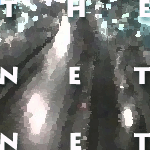Daniel Pipes is a Middle East expert, and Conspiracy grew
out of a similar study that centered on the Middle East. The book
is located firmly in Europe and the United States, however, and
offers an extremely interesting discussion of an inherently interesting
phenomenon: the origin and development of conspiracist thinking.
Intending to present an overview rather than a comprehensive work,
Pipes's short volume traces the U.S. idea of conspiracist thinking
back to Europe's middle ages, and he divides it into two main strains --
antisemitism [sic] and anti secret-society beliefs -- which have, to
some extent, merged over time.
Pipes qualifies his terms and the context of his work very carefully;
in particular he distinguishes conspiracist thinking from actual
conspiracy. His interest is in the style of conspiracist thinking
that gave rise to the conspiracism that is prevalent in the U.S. today.
He is careful to define terms such as conspiracist and to identify
current lines of conspiracist thinking and describe the characteristics
of conspiracist thinking before analyzing its history.
Pipes introduces antisemitism -- he deliberately uses the closed,
noncapitalized form to denote what is defined as an invalid set of
beliefs, with no useful relationship to facts about Jews (or other
Semitic groups) -- in the time of the Crusades, which also saw the
founding of the Knights Templar. He then traces the development of
antisemitism in Europe from the Christian attacks predicated on an
association of Jews with Muslims to the "international banker"
stereotype that arose with Rothschild and Jewish emancipation. He
also traces the development of attitudes toward secret societies,
from misinterpretation of the aims of real societies, such as the
Knights Templar and the Freemasons, to development of actual "secret
societies" based on those misinterpretations and on to today's
conception of secret societies as agents or puppet-masters of
governments, particularly the U.S. government.
Readers seeking voluminous documentation of today's wilder conspiracy
theories, particularly the aliens-made-a-deal-with-our-government
crowd, will find little satisfaction in Pipes's book. Pipes is
particularly interested in the way Stalinist Russia and Nazi Germany
embodied both conspiracy and conspiracist thinking, and he dismisses
even the Kennedy assassination with a few references to the obviousness
of the absurdity of conspiracy theories offered to explain it. The
modern conspiracy that attracts the lion's share of his attention is
the U.N.-flies-black-helicopters-and-is-installing-a-one-world-
government(-so-it-can-take-away-our-guns) theory, particularly as
articulated by Pat Robertson.
Leftist readers, however, might detect a conspiracy behind Pipes's
analysis of the groups promulgating today's conspiracy theories.
Conspiracy theory knows no bounds; it appears in the minds of the
educated and the ignorant, the Right and the Left, the rich and the
poor. But while Pipes is happily negative about conspiracism from all
walks of life, his context for Leftist conspiracism seems a little broad.
What he calls "conspiracist" could be construed as healthy skepticism
about politics and economic life, although the example he uses are
apt for his thesis (the O.J. Simpson trial among them.)
More interestingly, his characterizations of Rightist conspiracy
theorists trots out the usual contemptible picture of fascists who
can barely spell -- facists, perhaps -- but his characterization of
Leftists is no less stereotypical and even ironic in the context of the
study. Citing liberal orientation of the news media and academe, Pipes
characterizes Leftist conspiracist thinking as "more subtle", with "better
credentials", and Leftist conspiracists as seeking to
"delegitimate conservatives". In short, Rightist conspiracists are
obviously disaffected and cut off from power, but Leftist conspiracists
are around us, and in positions of influence besides. Pipes, by the
way, is, a founding editor of Middle East Quarterly, a journal
whose January 1997 Usenet announcement (of the journal's Web page)
stated in part, "We believe in standing by our allies, such as Israel
and Turkey, and in being resolute toward our opponents; we also think it
is in our national interest that the price of oil remain low." A
political slant to keep in mind when reading the journal, to be sure.
Conspiracy is an appealing book. Fundamentally reasonable
and filled with all kinds of interesting stuff about the Freemasons
and the Illuminati, it's a helpful primer on the terms that always
pop up when conspiracy theories are described. The descriptions of
wily Leftists with their access to the corridors of power is
appealing, too, at least to this liberal feeling pained by a swing
to the conservative side of America's political spectrum.
And so, as all good books that
concern paranoids should, Conspiracy both models and requires
nimble critical thinking.



